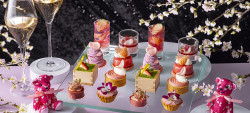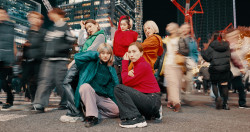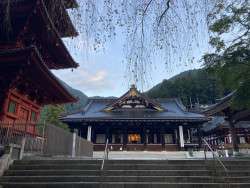
October 29, 2009
Inside Job
Three foreigners find their place within the Japanese fashion industry
By Metropolis
Originally published on metropolis.co.jp on October 2009

Leanne Yew
Photo by Alicia Fox
The Japanese fashion scene is famed for its rapidly evolving trends, and consumers who go to ever-increasing extremes to define their style. This insatiable monster is fed by an enormous industry that’s fiercely competitive and tends towards elitism. Brands quickly adapt to prevailing styles, but also stubbornly conform to the corporate hierarchies that prevail in any other field.
For an outsider, especially one from another country, the market can seem downright impenetrable. Yet an increasing number of foreigners are not only making inroads here, but also succeeding on their own terms.
“This can be a very hard market to break into,” admits Australian-born designer Leanne Yew. “There are a lot of opportunities to be creative, but the market is also ridiculously oversaturated, making it hard to stand out.”
Yew has made her presence felt through the distinctive approach of her brand Tokyo Kaleidoscope (www.tokyokaleidoscope.com). Interested in sewing since childhood, she later started collecting kimono during trips to Tokyo as a college student. After moving to Japan two years ago, she hit upon the idea of combining these two passions by “redesigning” kimono, stripping the lining from vintage pieces and using the printed silk to create one-of-a-kind dresses, tops and accessories.
“I really believe in social responsibility in fashion,” she says. “I always try to use the odd bits of fabric that are left over to make little accessories and other things.”
Yew thinks of her creations as “slow fashion,” a retort to the current movement that emphasizes low prices and “convenient” shopping experiences. “Big brands here are all about status and icons,” she says. “If you don’t have that, you have to make a concept for yourself.”
Although she admits that there are barriers to setting up your own brand, Yew encourages aspiring designers not to be afraid of trying to crack the market. She stresses the importance of Japanese skills, as well as surrounding yourself with similarly-inclined creative types. “It is also really important to understand the market,” she emphasizes. “That doesn’t mean just understanding fashion trends, but also the industry as a business.”

Waan Kunakorn
One designer Yew has collaborated with is Waan Kunakorn, who recently moved to Tokyo fresh out of college in Thailand to set up her own brand, Amata (www.amatastyle.com). Although she only started this spring, Waan has already held an exhibition in Omotesando’s Gyre Building, at the epicenter of Japanese fashion, and is currently planning her first fashion show. This whirlwind ride to success has left the young designer stunned.
“I come from a country where there is only one season, so people dress the same all year round,” she says. “I had so much to learn when I got here.”
Waan agrees that it’s important to learn as much as possible about the industry. “You have to understand the process of fashion, from its origins until it hits the streets and is worn by consumers.”
She is also quick to credit all the other people who have assisted her in Tokyo. “So many Japanese people and other expats have been so helpful,” she says. “If you want to break into the fashion industry in Japan, make sure you don’t keep your ideas a secret. You will find likeminded people who will support you.”

TJ Bruder
Photo coutesy of TJ Bruder
The need to gain familiarity with the industry is echoed yet again by TJ Bruder, a photographer who has been working in Japan for 11 years (www.tokyowildcat.com). “People here are very into their own brands and fields as a whole,” he says. “They also test you, asking what designers and brands you like, to see how much you know. If you show you know your stuff, they are more willing to work with you.”
Bruder recalls the hurdles he encountered during his early years here. While the roles of photographer, stylist and writer are normally clearly delimited in Japan and assigned to separate people, the Dutch-born correspondent was working for European magazines with tight budgets, forcing him to function as a one-man show and handle most tasks himself. Through photography, he was gradually able to build trust and gain connections in the industry, and now works as an art director for brand Hot Lips, designing store interiors, catalogues and more.
“It all comes down to communication,” he says. “That not only means speaking Japanese, but also understanding how things work in the industry here. If you are a foreigner, don’t try to act 150 percent Japanese. Be yourself, but try to do things the way they do them here.”
“There is one thing you can be sure of,” Yew reflects. “If you are able to succeed in the industry here, then you can go to any other country and be successful there as well.”







